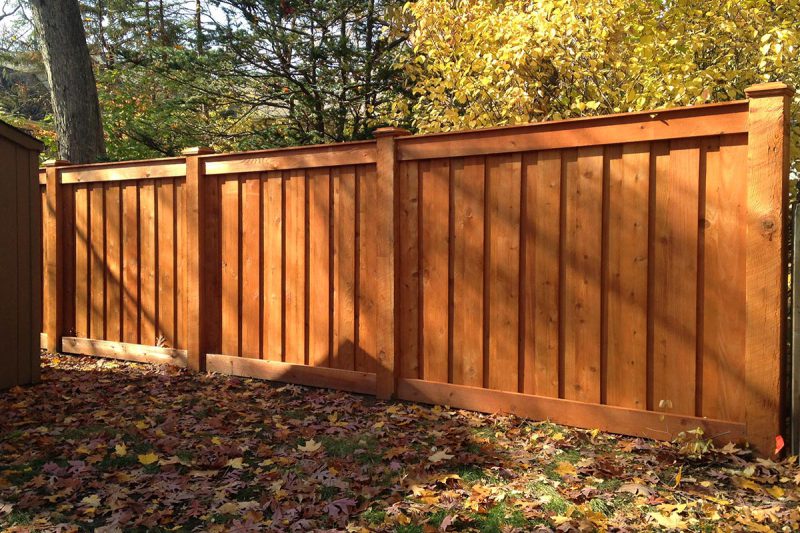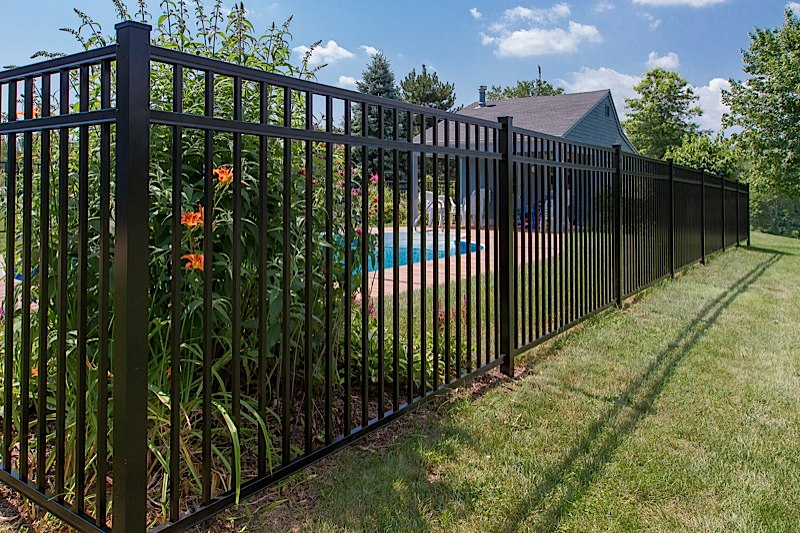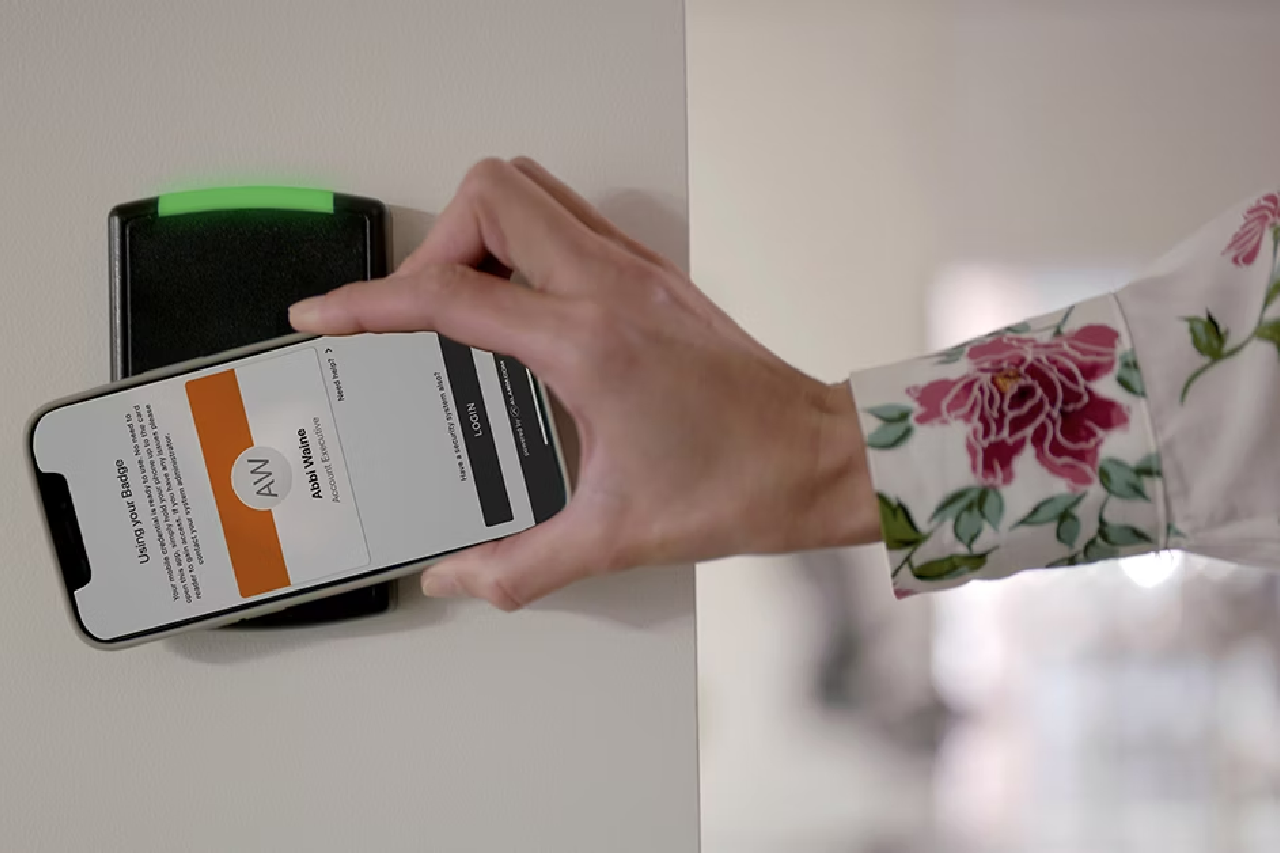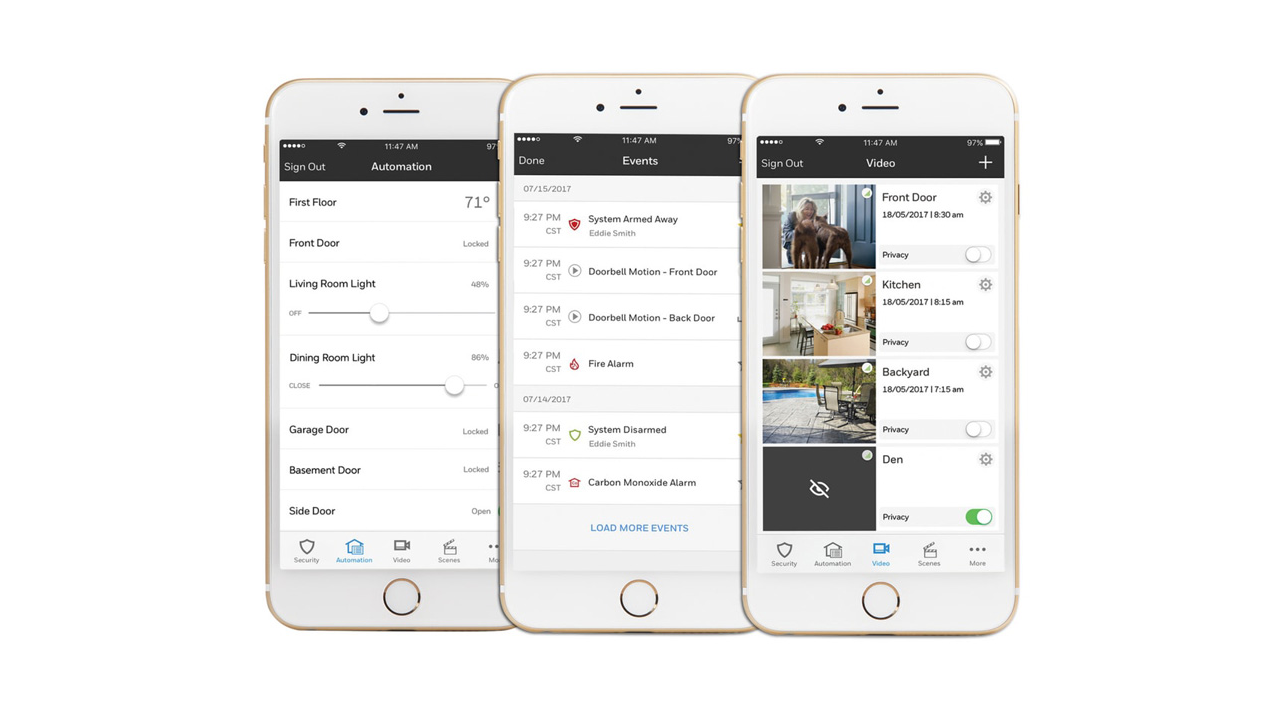Last Updated on March 4, 2022 by Alarm New England
When it comes to fencing for your yard, there are many options for you — from the material to the color and the style.
So how do you figure out what’s right for your home?
The type of fence you choose will depend primarily on the purpose the fence serves. Are you looking to add privacy to your backyard? Maybe you need an area to keep your dogs fenced in?
Regardless of your reason for needing a fence, we will go over fencing options and materials to help you make the best fence decision for your home.
Fencing Materials
There are many different fencing materials to choose from, below we highlight some popular choices:
Vinyl Fencing
Vinyl fencing comes in a variety of styles and colors. This type of fencing is appealing to many because it never needs repainting. You can choose from privacy, semi-private, and post and rail options.
While vinyl is very sturdy and won’t rot, warp or split, this sturdiness comes at a price. It’s one of the more expensive fencing options.
Wood Fencing
Wood fencing is the most widely-used fencing material thanks to its versatility. You can paint or stain your wood fencing in any color that you wish.

Wood fencing gives off a very natural appearance and can be customized to fit any style. This type of fence is significantly cheaper than vinyl fencing, but it has the potential to suffer from more wear and tear and require additional upkeep.
Aluminum Fencing

Aluminum fencing is durable and can be diverse in style, adding some modern flair to your home. One of the positives of aluminum is that it doesn’t rust, so maintenance is usually minimal.
Chain Link Fencing

Chain link may not be the most attractive type of fence, but it can be very versatile and easy to install. You will often see chain link used around sports courts and for pet enclosures. This is a long-lasting and robust fence option that does not require a lot of maintenance and upkeep.
Wrought Iron Fencing

Wrought iron is an ornamental type of fencing that is often used to increase curb appeal on your home. There are a variety of styles and colors to choose from. Also, this material is extremely durable and requires little maintenance.
Tips for Installing Fencing
Designing and installing a fence in your yard is not always an easy task. Here are a few tips to help in your fence planning process.
Know Your Local Codes
Fencing is typically subject to local zoning codes. Before you make any steps in your fence installation process, check with your local municipality to make sure you are in compliance.
There may be codes that dictate the height of your fence, how far it is from a property line and even whether or not the front yard can be fenced-in.
If you live in a development or community with a neighborhood association, be prepared to face even more obstacles when getting your fencing approved. They may have specifications style, color, and height of your fence.
Be Courteous to Your Neighbors
If you have close neighbors, installing a fence in your yard will also affect them by creating a tangible marker around your property. If you have a neighbor whose property will be affected by your fence, the courteous thing to do is to give them a heads-up first.
It is also a good idea to check with them on property lines. The last thing you want to do is have your fencing installed only to discover that you were off on your property line measurement.
Your neighbors will surely appreciate a quick conversation with you regarding the fence so that they know what is going on and can prepare.
Determine Why You Need the Fence
When choosing which type of fence is best for your yard, think about the main reason for putting up a fence.
Privacy Fencing – this type of fence is ideal for blocking sight lines and maintaining a bit of privacy from neighbors or people walking by. It can also be a way to prevent potential burglars from seeing into your yard or windows. However, this is not always an effective deterrent as it also affords someone who comes onto your property the same visual block. To create a privacy fence, you need solid fencing with vertical boards that are close together so that you cannot see out and your neighbors cannot see in.
Typically, people choose to have their privacy fence at least six feet tall to avoid anyone peering over it. If you want there to be slightly more visibility, you can choose to use pickets which have small gaps between them but still offer a lot of privacy.
Security Fencing – this type of fence is used as a security measure for your home to keep intruders out. Similar to a privacy fence, you will want a security fence to be at least six feet tall to be an effective deterrent.
The best security fences use a smooth outer surface that would be difficult to climb up and have sharp spikes on the top that would deter anyone from trying to get over.
Decorative Fencing – sometimes people want something to spruce up the look of their home and add curb appeal. In these cases, decorative fencing is your best way to go as it is typically much smaller and less obstructive than privacy or security fencing.
This type of fence is usually between two and four feet tall and pickets are more spaced out so as not to obstruct your view. You can customize your decorative fencing with different designs, patterns, and colors.
Safety Fencing – this type of fencing is excellent for enclosing an area for your dog, keeping pests off your property or protecting a swimming pool. Typically, chain link is best for safety fencing as it provides solid fencing without blocking the light or your view.
If you want safety fencing but don’t want to spend a lot of money on it, you can get metal or plastic mesh and secure it with metal posts. This is can be a good option if it’s in an isolated area where the fence’s appearance is not important.
There are many considerations when choosing fencing options and materials. But the key to creating the right fence is to spend some time thinking about its purpose, the aesthetics, and how your fence may impact those around you.






